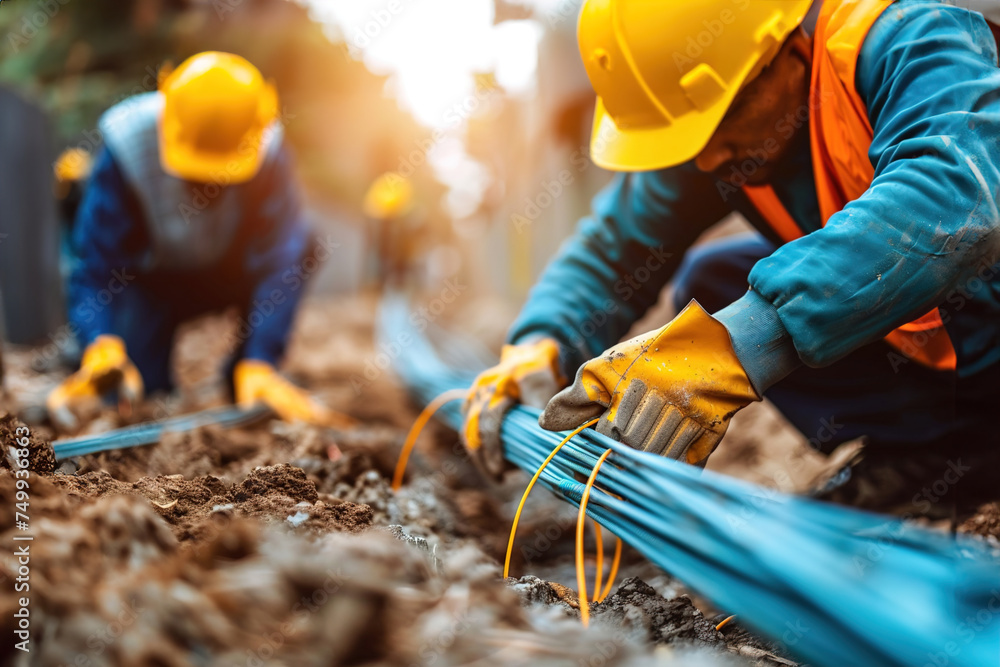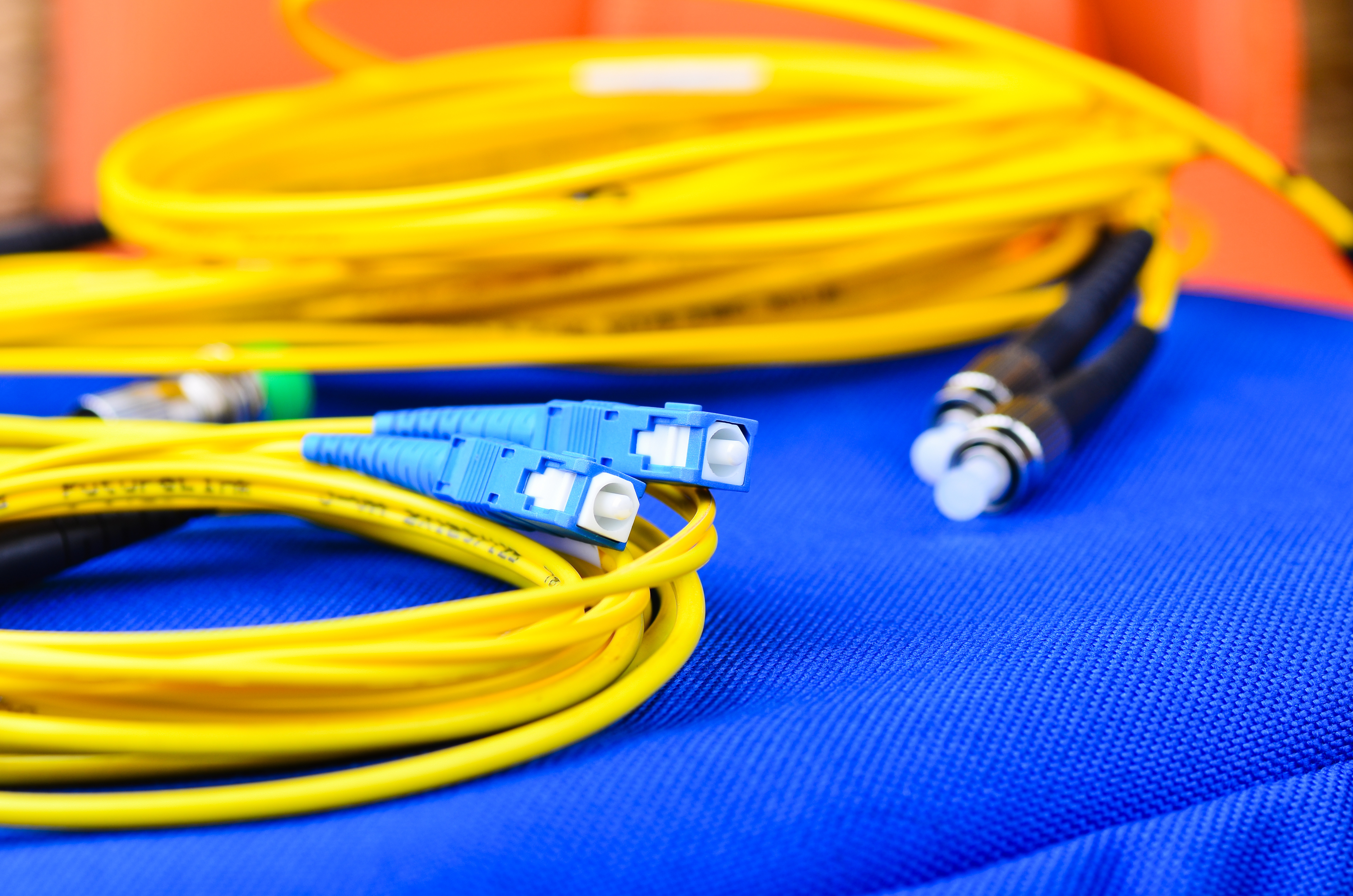Broadband Resources for Coloradans




Supporting Coloradans
Our vision is that all Coloradans should have equal access to affordable, fast and reliable broadband service. Accessing the internet is essential in today's world, but it can be difficult to get connected. That's why we've brought together a collection of resources to help you bridge the digital divide. On this page, you'll find information on finding low-cost internet plans, improving your digital skills, and purchasing affordable refurbished devices. We also provide a tool to help you find an Internet Service Provider (ISP) in your area, along with our "Broadband 101" guide to help you understand the basics of getting and staying connected.
What is Broadband?
"Broadband" commonly refers to high-speed internet access that is always on and faster than the traditional dial-up access. The FCC defines broadband as a high-speed internet connection with a minimum speed of 100 megabits per second (Mbps) download and 20 Mbps upload.
Why is Broadband Important?
Broadband enables people to access to basic amenities such as education, health care, public safety and government services. As the technology supporting broadband connectivity continues to grow, so do the benefits of getting connected. Here are some examples of the impact of broadband connectivity.
Accessing Broadband
Broadband is accessed through several different transmission technologies such as:
- Digital subscriber lines (DSL), which transmit data to homes and businesses over traditional copper telephone lines that are already installed. Not all copper telephone lines, however, are capable of transmitting data as DSL.
- Cable modems, which transmit data through the same coaxial cables that generate pictures and sounds on television sets.
- Fiber-optic cables, which convert electrical signals carrying data into light and send the light through transparent glass fibers about the diameter of a human hair. Fiber transmits data at speeds much faster than DSL and cable, typically tens and even hundreds of Mbps.
- Fixed wireless, which involves the wireless transmission of data from a local antenna to a permanent location such as a home or business. The service is similar to what is delivered over DSL or a cable modem, but the transmission is wireless.
- Mobile wireless, which connects users in temporary locations such as coffee shops. Mobile broadband is transmitted through technologies such as portable modems and mobile phones.
- Satellite, which is another form of wireless and is useful for serving remote or sparsely populated areas.
Understanding Upload and Download Speeds
The Federal Communications Commission defines basic broadband as transmission speeds of at least 100 Mbps download and 20 Mbps upload.
Download speed is how quickly information travels from the internet to your device and appears on the screen. For example, Netflix uses about 5 Mbps to stream a movie, so if your speeds are less than 5 Mbps, the movie will likely stop and buffer.
Upload speed is how quickly information travels from your device to the internet. For example, uploading pictures to an online album will be limited by the upload speed. If you have a 5 Mbps upload connection, it would take about three minutes to upload 20 pictures. A 1.5 Mbps upload connection would increase that time to over eight minutes.
Mbps stands for “Megabits per second.” This is the standard measure of speed or bandwidth on home internet connections. It measures how many bits (units of digital information) can be transferred each second. Internet services are most often listed in Mbps, but you will also hear about Kbps or Gbps. Here’s how these terms relate to each other:
- Kilobit – One kilobit is equal to 1,000 bits per second (Kbps)
- Megabit – One megabit is equal to 1,000 Kbps or one million bits per second (Mbps)
- Gigabit – One gigabit is equal to 1,000 Mbps, one million Kbps or one billion bits per second (Gbps)
Why do Upload and Download Speed Matter?
If your service is not fast enough for the type of activity you are trying to do on the internet, you may experience dropped connections, buffering or the inability to complete your tasks. Imagine you just completed a homework assignment and are unable to upload it in time to meet the deadline.
For interactive learning: two-way video calls requires upload and download at the same time, meaning you would need about 3 Mbps download and 3 Mbps upload for a good connection.
Data Caps
What are Data Caps and why do they matter?
Internet data caps are monthly limits on the amount of data you can use over your internet connection. When you hit that limit, there can be a variety of consequences based on your service contract. This can include:
- Overage Fees
- Slowing down data speeds
- Disconnecting service
Data caps include both upload and download data. That means when you are doing an activity like video conferencing, you are are uploading and downloading simultaneously, and data from both upload and download gets added to you data usage number.
Caps are most common for mobile data service, but are also imposed by many “fixed” internet providers (meaning the connection to your home from the phone or cable company). Mobile data caps are often much lower than home internet services – think of 10 GB per month for mobile service versus 1,000 GB per month for fixed service.
It’s important to know if you have a data cap and what happens when you reach it. Ask your Internet Service Provider or mobile/cellular carrier if your service contract includes data caps, and, if so, what will happen if your data usage exceeds the data cap.
Lifeline Program
USAC's Lifeline Program is a federal program that offers a monthly benefit of up to $9.25 towards phone or internet services for eligible subscribers (up to $34.25 for those living on Tribal lands). A consumer can qualify for the Lifeline benefit if their income is 135% or less than the federal poverty guidelines, or if they participate in SNAP, Medicaid, or other federal programs.
Refer to the FCC Consumer Guide - Lifeline Support for Affordable Communities for more information on Lifeline.
Affordable Connectivity Program
The Affordable Connectivity Program (ACP) was a Federal Communications Commission (FCC) program to help low-income households pay for internet service and connected devices like a laptop or tablet that ended on June 1, 2024.
There are over 100 broadband service providers serving Colorado. Use the Colorado Broadband Map to locate service providers in your area. Contact the service providers directly to confirm their service offerings.
Visit the Colorado Broadband Map
If you find inaccurate data listed in the Colorado Broadband Map, such as speeds listed that are not available when you contact the company, use the Report Inaccurate Data form to let us know. We will use this information to investigate data discrepancies and work with the broadband providers to improve data accuracy.
Other Resources
ISP Price and Speed Comparison
The Denver Public Library has created an ISP Price and Speed Comparison to help customers figure out what is right internet plan for their particular situation.
Bandwidth Calculator
Use this bandwidth calculator to estimate your household bandwidth needs. Keep in mind that upload speeds are important too, especially if you are using two-way video conferencing apps like Zoom, Microsoft Teams, or Google Meet.
Take the Broadband Survey and Speed Test
Take our Broadband Survey and Speed Test to report locations without internet or to submit speed test results to our database. The survey will ask for additional information including your location, service provider and service package. Data collected from this test will be anonymized and aggregated for public use.
Digital literacy and access to the internet are considered a “super social determinant of health." They are the backbone for all other social determinants of health (economic sustainability, health care system, community and social context, food, education, neighborhood and physical environment).
The Digital Access and Empowerment Team includes staff members from the Office of the Future of Work in the Colorado Department of Labor & Employment, and is supported by the Office of eHealth Innovation.
Learn more about Colorado's Digital Access and Empowerment Initiative
Definitions
Digital Equity
Digital Equity is a condition in which all individuals and communities have the information technology capacity needed for full participation in our society, democracy and economy. Digital Equity is necessary for civic and cultural participation, employment, lifelong learning, and access to essential services. Also referred to as digital opportunity. (National Digital Inclusion Alliance)
Digital Inclusion
Digital Inclusion refers to the activities necessary to ensure that all individuals and communities, including the most disadvantaged, have access to and use of Information and Communication Technologies (ICTs). This includes 5 elements: 1) affordable, robust broadband internet service; 2) internet-enabled devices that meet the needs of the user; 3) access to digital literacy training; 4) quality technical support; and 5) applications and online content designed to enable and encourage self-sufficiency, participation and collaboration. Digital Inclusion must evolve as technology advances. Digital Inclusion requires intentional strategies and investments to reduce and eliminate historical, institutional and structural barriers to access and use technology. (National Digital Inclusion Alliance)
Digital Literacy
Digital Literacy is the ability to use information and communication technologies to find, evaluate, create, and communicate information, requiring both cognitive and technical skills. (American Library Association)
Colorado Digital Access Plan
Colorado published its Digital Access Plan in early 2024, which explores the current state of digital access in Colorado, identifies and aligns statewide goals, and outlines strategies for implementing the Plan.
Digital Access Plan: Funding Update
The State Digital Equity Capacity Grant was going to be used to implement parts of the Digital Access Plan. The Colorado Department of Labor and Employment Office of the Future of Work received notification on May 9, 2025 that federal funding for the this grant has been terminated effective immediately. The funding's original end date was December 31, 2029.
If you would like to improve broadband in your community, the first step is to learn about the state of broadband in your community and work to educate your neighbors and community.
Where to Start
Take the Broadband Survey and encourage other community members to participate. The broadband survey informs the data on the Colorado Broadband Map, which is used to make decisions about state broadband grant funding.
Find out if there are existing efforts underway or grants awarded in the area. Reach out to your local governments, schools, libraries, and healthcare facilities to find out how they are addressing broadband access.
This glossary is provided as a reader aid to help our website users understand the common terminology and acronyms they will find on our website. It is not a complete list of broadband terminology. Please contact us if you have any questions about terms that use on our site.
Jump to: A B C D E F G H I J K L M N O P Q R S T U V W X Y Z
B
Backhaul: The telecommunications link used to transport traffic from a geographically distant point, such as a wireless base station, to a significant aggregation point in the network, such as a mobile telephone switching office or Internet peering point.
Bandwidth: The maximum data transfer rate from one point to another at a given time period over a network or the rate at which data can be transmitted across a network.
Bluetooth: An industry standard using unlicensed radio frequency spectrum for wireless connectivity over short distances to link computers, wireless handsets, and other devices.
Broadband: High-speed Internet access that is always on and faster than the traditional dial-up access. The Federal Communications Commission defines basic broadband as transmission speeds of at least 25 Mbps download and 3 Mbps upload.
C
Carrier of last resort: The carrier that commits (or is required by law) to provide service to any customer in a service area that requests it, even if serving that customer would not be economically viable at prevailing rates.
Census block: The smallest geographic unit for which the Census Bureau collects and tabulates decennial census data.
Census tract: A small, relatively permanent statistical subdivision of a county, designed to contain roughly 1,000 to 8,000 people who are relatively homogeneous with respect to their demographics, economic status and living conditions.
Common carrier: A telecommunications provider, such as a telephone company, that offers its services for a fee to the public indiscriminately.
Community Anchor Institutions: Refer to schools, libraries, public safety institutions (firehouses and police departments), colleges and universities, healthcare facilities and other community support organizations. These institutions can provide outreach, access and equipment to support the greater use of broadband services.
Competitive Local Exchange Carrier (CLEC): A company that offers local telephone service in competition with the legacy telephone company.
D
Dark fiber: A fiber optic cable that is laid and ready for use, but for which the service provider has not provided modulating electronics; usually contrasted to lit fiber, which is fiber optic cable in use to provide wired communications.
Data Over Cable Service Interface Specification (DOCSIS): A standard for the transmission of data over a cable network.
Digital divide: The gap between those who have access to digital technology and those who do not. These technologies include but are not limited to; smartphones, computers and the internet. The gap is a result of economic, educational, and/ or social inequalities between those who have computers and online access and those who do not.
Digital equity: When all members of a community have equal access and sufficient digital literacy to use communications technologies.
Digital inclusion: Activities necessary to ensure that all individuals and communities have access to information and communication technologies, and the literacy and resilience to use them. Digital inclusion ultimately leads to digital equity.
Digital resilience: The awareness, skills, agility, and confidence to be empowered users of new technologies and adapt to changing digital skill demands.
Digital literacy: The ability to use information and communication technologies to find, evaluate, create, and communicate information, requiring both cognitive and technical skills.
E
Ethernet: A type of digital transmission service. Traditionally, Ethernet operates at 10 megabits per second (Mbps) (also known as 10-Base-T), although 100-Base-T (100 Mbps) and Gigabit (1,000 Mbps) Ethernet are also available.
F
FCC: Federal Communications Commission
Fiber-to-the-home (FTTH): Is used to specify those that use fiber to connect the subscriber because most telecommunications networks use fiber in some part of their networks. FTTH may be more expensive to install currently, but offers significant savings in terms of maintenance when compared to copper alternatives.
I
Intelligent Transportation System (ITS): A broad range of advanced communications technologies that, when integrated into transportation infrastructure and vehicles, relieves congestion, improves safety, and mitigates environmental impact.
Internet Service Provider (ISP): A company that provides businesses, homes, anchor institutions, etc., with a connection to the internet. They use many technologies to bring internet service to their customers, including fiber, DSL, cable, fixed wireless or satellite.
L
Last-mile broadband: The final leg of a telecommunications network that delivers service to retail end-users (customers). Last-mile network connections come from middle-mile networks.
M
Middle-mile broadband: The telecommunication network of robust, high-speed fiber or fixed wireless that brings broadband close enough to a residence or business so an internet service provider (ISP) may provide internet access. Middle-mile connects to the global internet backbone.
Modem: A piece of customer premise equipment typically managed by a broadband provider as the last connection point to the managed network.
Multi-use facility: A large group of residences or businesses that need internet. For example, apartment buildings and shopping centers.
N
Next Generation 911 (NG911): An emergency response system that integrates the core functionalities of the E911 system and also supports multimedia communications (such as texting, e-mail, and video) to the PSAP and to emergency personnel on the ground.
Notice of Proposed Rulemaking (NPRM): A notice containing a proposal for adoption of new rules. The Administrative Procedure Act (APA) requires that an agency, before promulgating a binding rule, must publish general notice of its proposal in the Federal Register.
O
Open source: A software development model by which the source code to a computer program is made available publicly under a license that gives users the right to modify and redistribute the program.
P
Point of Presence: A physical location where a communications carrier allows other carriers to access its network.
Pole attachment: Any attachment by a cable television system or provider of communications service to a pole, duct, conduit, or right-of-way owned or controlled by a utility.
Propagation model: an empirical mathematical formulation for the characterization of radio wave propagation as a function of frequency, distance and other conditions.
Public Safety Answering Point (PSAP): A call center responsible for answering emergency calls and dispatching emergency services.
Public Switched Telephone Network (PSTN): The legacy circuit-switched telephone network.
R
Remote patient monitoring: Using devices and communications networks to remotely collect and send diagnostic data to a monitoring station for interpretation. For example, measuring blood pressure when a patient is at home.
Right-of-way: The right to pass over or occupy a particular piece of land. For example, utilities generally receive rights-of-way from municipalities to erect and wire poles to carry electricity, telecommunications services, and cable service.
S
Service Level Agreement (SLA): An agreement between a user and a service provider defining the nature of the service provided and establishing metrics for that service, trouble reporting procedures and penalties if the service provider fails to perform.
Smart Grid: The electric delivery network, from electrical generation to end-use customer, integrated with sensors, software, and two-way communications technologies to improve grid reliability, security, and efficiency.
Smart meter: A digital meter (typically electric) located on the customer premises that records energy usage and has two-way communications capabilities with utility systems.
T
Telecommunications Relay Service (TRS): A telephone service that enables persons with TTYs, individuals who use sign language and people who have speech and hearing disabilities to use telephone services by having a third party transmit and translate a call. Consumers can access these services by using, for example, video phones, computers, web-enabled devices, captioned telephones, and TTYs.
Transport: The transmission facilities between the wire center or switch of an incumbent local exchange carrier and the wire center or switch of another carrier.
U
Unserved (per FCC): Households or businesses that do not have access to internet speeds of 25 Mbps download/ 3 Mbps upload or higher.
Underserved (per FCC): Households or businesses that do not have access to internet speeds between 25 Mbps download/ 3 Mbps upload and 100 Mbps download/ 20 Mbps upload or higher.
